April 26 stands as one of history’s most eventful days, witnessing the rise and fall of empires, groundbreaking discoveries, and moments that shaped our modern world across centuries of human achievement.

Politics and Government Events on April 26
1915 – Italy Signs Secret Treaty of London
Italy secretly committed to joining the Allied Powers by signing the Treaty of London. This diplomatic agreement promised Italy significant territorial gains in exchange for entering World War I against the Central Powers.
The treaty marked Italy’s decisive shift from neutrality to active participation in the Great War. These secret negotiations would later influence the post-war redrawing of European boundaries.
1925 – Hindenburg Wins German Presidential Election
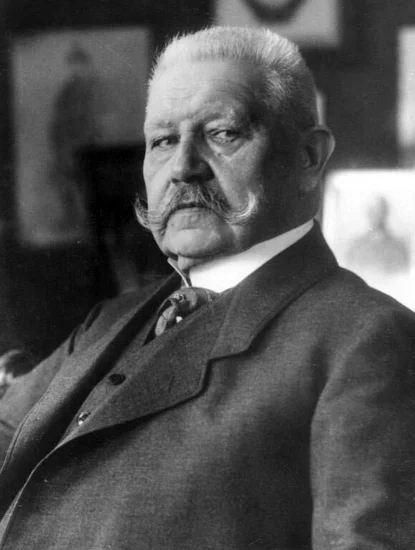
Paul von Hindenburg defeated Wilhelm Marx in the second round of voting to become the first directly elected president of the Weimar Republic. The elderly war hero’s victory marked a significant shift in German politics.
Hindenburg’s election brought conservative military leadership to the struggling republic. His presidency would prove crucial in the eventual rise of Adolf Hitler to power.
1960 – South Korean President Syngman Rhee Resigns

President Syngman Rhee resigned after twelve years of increasingly dictatorial rule following the April Revolution. Student protests and widespread civil unrest forced the authoritarian leader from power.
Rhee’s departure marked a turning point in South Korean democracy. The revolution demonstrated the power of popular movements to challenge entrenched political authority.
1970 – World Intellectual Property Organization Established
The Convention Establishing the World Intellectual Property Organization officially entered into force. This international agreement created a framework for protecting intellectual property rights globally.
The organization would become essential for coordinating patent, trademark, and copyright protections across national borders. Its establishment reflected the growing importance of intellectual property in international commerce.
1933 – Nazi Germany Establishes the Gestapo
Hermann Göring officially established the Gestapo as Nazi Germany’s secret police force. This organization would become the regime’s primary instrument of political repression and surveillance.
The Gestapo’s creation marked a decisive step toward totalitarian control over German society. Its methods would terrorize both ordinary citizens and political opponents throughout the Nazi era.
1944 – Greek Government-in-Exile Leadership Change

Georgios Papandreou assumed leadership of the Greek government-in-exile based in Egypt. His appointment came during the critical final phase of World War II in the Mediterranean.
Papandreou’s leadership would prove instrumental in coordinating Greek resistance efforts. His government laid the groundwork for post-war Greek political reconstruction.
2005 – Syria Withdraws from Lebanon

Syria withdrew its final 14,000 military personnel from Lebanon under intense international pressure, ending 29 years of military occupation. The Cedar Revolution had successfully mobilized Lebanese opposition to Syrian dominance.
This withdrawal marked Lebanon’s return to independence after decades of foreign military control. The event demonstrated the power of popular movements to challenge regional hegemony.
1954 – Geneva Conference on Indochina and Korea Begins
The Geneva Conference opened with the ambitious goal of restoring peace in both Indochina and Korea. Major world powers gathered to address two of the most pressing conflicts of the Cold War era.
The conference would ultimately reshape Southeast Asian geopolitics through the partition of Vietnam. Its outcomes would influence regional conflicts for decades to come.
Military and Naval History on April 26
1916 – Easter Rising Battle of Mount Street Bridge
Irish rebels engaged British forces in the Battle of Mount Street Bridge during the Easter Rising. This fierce urban combat became one of the uprising’s most significant military engagements.
The battle demonstrated the rebels’ tactical capabilities against superior British forces. Mount Street Bridge became a symbol of Irish resistance to British rule.
1937 – Bombing of Guernica
The German Condor Legion and Italian Aviazione Legionaria bombed the Basque town of Guernica during the Spanish Civil War. This attack marked the first aerial bombing of civilians in European warfare.
The bombing shocked the international community and inspired Pablo Picasso’s famous painting. Guernica became a symbol of the horrors of modern warfare against civilian populations.
1945 – Battle of Bautzen
German forces launched their final successful tank offensive of World War II at the Battle of Bautzen. This engagement represented the Wehrmacht’s last noteworthy victory in the dying days of the Third Reich.
Despite tactical success, the battle could not alter Germany’s inevitable defeat. The offensive demonstrated the German military’s continued fighting capability even in desperate circumstances.
1945 – Liberation of Baguio
Filipino troops of the 66th Infantry Regiment and American forces from the 33rd and 37th Infantry Divisions liberated Baguio from Japanese occupation. The joint operation successfully expelled General Tomoyuki Yamashita’s forces from the strategic mountain city.
The liberation marked a crucial victory in the Philippines campaign. This success demonstrated the effectiveness of Filipino-American military cooperation in the Pacific theater.
1944 – Capture of German General Heinrich Kreipe
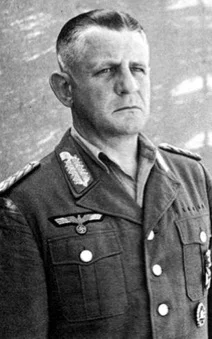
Allied commandos successfully captured German General Heinrich Kreipe in occupied Crete. This daring operation demonstrated the continued effectiveness of special forces behind enemy lines.
The capture boosted Allied morale and showcased resistance capabilities in occupied territories. Kreipe’s kidnapping became one of the war’s most celebrated commando operations.
Science and Discovery Milestones on April 26
1954 – First Polio Vaccine Clinical Trials Begin
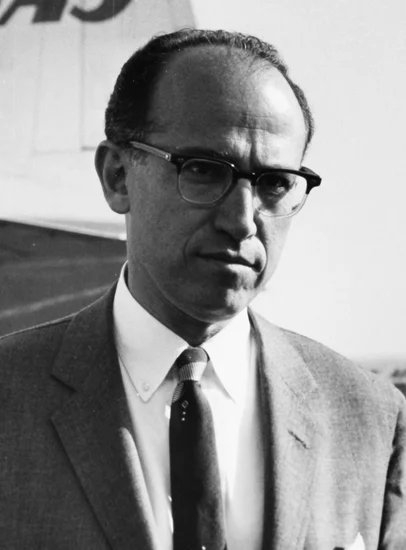
The first clinical trials of Jonas Salk’s revolutionary polio vaccine commenced in Fairfax County, Virginia. This groundbreaking medical trial offered hope for conquering one of humanity’s most feared diseases.
The successful trials would lead to mass vaccination campaigns that virtually eliminated polio. Salk’s vaccine represented a triumph of medical science over childhood disease.
1981 – First Human Open Fetal Surgery
Dr. Michael R. Harrison at the University of California, San Francisco Medical Center performed the world’s first human open fetal surgery. This pioneering procedure opened new possibilities for treating birth defects before birth.
The surgery marked a revolutionary advance in prenatal medicine. Harrison’s technique would develop into a specialized field saving countless lives.
1962 – NASA’s Ranger 4 Crashes into Moon
NASA’s Ranger 4 spacecraft crashed into the Moon’s surface during its attempted lunar mission. Despite the mission’s failure, the crash provided valuable data about lunar impact dynamics.
The mission contributed to America’s growing understanding of lunar conditions. Each Ranger mission, successful or not, advanced preparations for eventual manned lunar landings.
1962 – Britain Launches First Satellite
The British space programme achieved a major milestone by launching Ariel 1, the country’s first satellite. This achievement established Britain as a significant player in the emerging space race.
Ariel 1 demonstrated British technological capabilities in space exploration. The satellite’s successful launch marked Britain’s entry into the exclusive club of spacefaring nations.
1986 – The Chernobyl Disaster

The Chernobyl Nuclear Power Plant in the Ukrainian Soviet Socialist Republic suffered a catastrophic explosion and fire. This disaster released radioactive materials across large areas of Europe.
The accident exposed fundamental flaws in Soviet nuclear technology and safety protocols. Chernobyl became synonymous with nuclear power’s potential dangers and environmental consequences.
Cultural and Arts Events on April 26
1923 – Royal Wedding of Duke of York
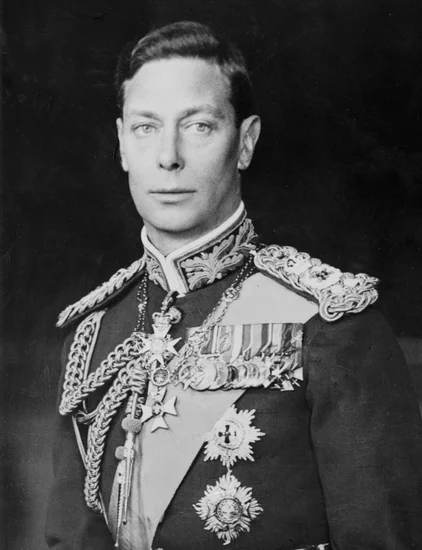
The Duke of York married Lady Elizabeth Bowes-Lyon at Westminster Abbey in a ceremony that captivated the British Empire. The future King George VI and Queen Mother’s wedding symbolized stability during turbulent times.
The marriage would prove crucial during the abdication crisis of 1936. Their partnership provided steady leadership throughout World War II and beyond.
1943 – Easter Riots in Uppsala

The Easter Riots erupted in Uppsala, Sweden, creating significant civil unrest during World War II. These disturbances reflected wartime tensions and social pressures within neutral Sweden.
The riots demonstrated that even neutral countries faced internal conflicts during the global war. Uppsala’s unrest highlighted the social strains of maintaining neutrality.
1989 – Tiananmen Square Protests Inflamed
People’s Daily published the controversial April 26 Editorial that severely criticized student demonstrators and inflamed the nascent Tiananmen Square protests. The editorial’s harsh tone galvanized opposition to the Chinese government.
The publication marked a turning point in the pro-democracy movement. The editorial’s inflammatory language helped transform student protests into a broader popular uprising.
Religious and Social Events on April 26
1963 – Libya Grants Women Electoral Rights
Libya amended its constitution to transform the United Kingdom of Libya into a unified Kingdom of Libya and granted women the right to participate in elections. This progressive step advanced women’s rights in the Arab world.
The constitutional changes reflected Libya’s modernization efforts under King Idris. Women’s electoral participation marked a significant social advancement for the conservative kingdom.
1922 – Tanganyika and Zanzibar Form Tanzania
Tanganyika and Zanzibar merged to create the United Republic of Tanzania under Julius Nyerere’s leadership. This political union created one of Africa’s most stable post-colonial nations.
The merger demonstrated successful African political integration after independence. Tanzania’s formation became a model for peaceful political unification in post-colonial Africa.
Business and Economic Events on April 26
1942 – Benxihu Colliery Disaster
The Benxihu Colliery accident in Japanese-occupied Manchukuo killed 1,549 Chinese miners in one of history’s deadliest mining disasters. The tragedy highlighted the dangerous working conditions in wartime industrial facilities.
The disaster exposed the human cost of wartime industrial production. Safety regulations were often ignored in the rush to meet military production quotas.
1966 – Tashkent Earthquake

A magnitude 5.1 earthquake struck Tashkent, the largest city in Soviet Central Asia, destroying most of the city and killing between 15 and 200 people. The disaster prompted massive Soviet reconstruction efforts.
The earthquake led to Tashkent’s complete rebuilding as a modern Soviet city. The reconstruction demonstrated the USSR’s commitment to its Central Asian republics.
1994 – China Airlines Flight 140 Crash

China Airlines Flight 140 crashed at Nagoya Airport in Japan, killing 264 of the 271 passengers and crew aboard. The disaster highlighted crucial aviation safety issues in international commercial flight.
The crash led to significant improvements in pilot training and aircraft safety systems. Investigations revealed critical flaws in pilot-aircraft interface design.
Transportation and Infrastructure on April 26
1956 – First Container Ship Departs
SS Ideal X, the world’s first successful container ship, departed Port Newark, New Jersey, for Houston, Texas. This voyage revolutionized global shipping and international trade.
The container ship concept transformed maritime commerce by dramatically reducing cargo handling costs. Malcolm McLean’s innovation made global trade more efficient and affordable.
1958 – Royal Blue’s Final Run

The Baltimore and Ohio Railroad’s Royal Blue completed its final run from Washington, D.C., to New York City after 68 years of service. This train was America’s first passenger service to use electric locomotives.
The Royal Blue’s retirement marked the end of an era in American rail transportation. Its electric propulsion had pioneered cleaner, more efficient passenger rail service.
1991 – Tornado Outbreak in Central United States

Fifty-five tornadoes struck the central United States in a devastating outbreak. Andover, Kansas, recorded the year’s only F5 tornado, causing catastrophic damage.
The outbreak demonstrated the destructive power of severe weather systems. Advanced warning systems helped minimize casualties despite the storms’ intensity.
1989 – Bangladesh Tornado Disaster

The deadliest known tornado in history struck Central Bangladesh, killing over 1,300 people, injuring 12,000, and leaving 80,000 homeless. The disaster highlighted the vulnerability of densely populated rural areas.
The tornado’s devastation prompted international humanitarian assistance. The tragedy demonstrated the need for improved weather warning systems in developing nations.
Sports and Recreation on April 26
1920 – Ice Hockey’s Olympic Debut

Ice hockey made its Olympic debut at the Antwerp Games with Canada defeating Sweden 12-1 in the gold medal match. Center Frank Fredrickson scored seven goals in the dominant Canadian victory.
The sport’s Olympic introduction showcased ice hockey’s growing international appeal. Canada’s overwhelming victory established their early dominance in international hockey competition.
1903 – Atlético Madrid Football Club Founded
Atlético Madrid Association Football Club was officially founded, beginning what would become one of Spanish football’s most successful organizations. The club started as a branch of Athletic Bilbao.
The founding marked the beginning of Madrid’s football rivalry with Real Madrid. Atlético would develop into one of Europe’s most competitive football clubs.
1994 – South Africa’s First Multiracial Election
South Africa conducted its first multiracial democratic election, with Nelson Mandela’s African National Congress winning a decisive victory. This historic vote marked the end of apartheid and the beginning of majority rule.
The election transformed South Africa from a racial oligarchy into a multi-racial democracy. Mandela’s victory symbolized the triumph of human rights over institutionalized racism.
Notable Births on April 26
1917 – I. M. Pei, Architectural Visionary
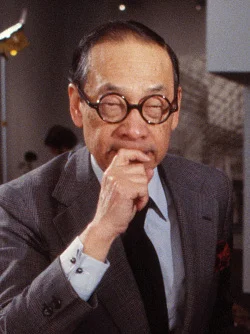
Chinese-American architect I. M. Pei was born, destined to become one of the 20th century’s most influential designers. His childhood in China and education in America shaped his unique architectural perspective.
Pei would create iconic structures including the National Gallery of Art’s East Building and the Bank of China Tower. His geometric modernist style revolutionized contemporary architecture.
1933 – Carol Burnett, Entertainment Legend
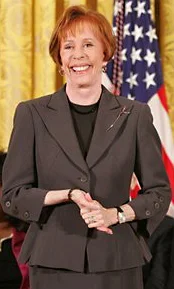
American actress, singer, and producer Carol Burnett was born in San Antonio, Texas. Her comedic talents would make her one of television’s most beloved performers.
Burnett’s variety show became a cultural institution, launching numerous careers. Her groundbreaking comedy work opened doors for female performers in television.
1970 – Melania Trump, Future First Lady

Slovenian-American model Melania Trump was born in Slovenia, later becoming the 47th First Lady of the United States. Her modeling career took her from Europe to America.
Trump’s international background brought a unique perspective to the role of First Lady. Her multilingual abilities and European heritage distinguished her tenure.
1914 – Bernard Malamud, Literary Master
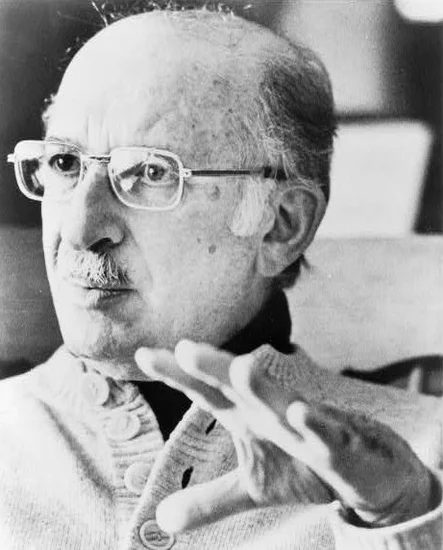
American novelist and short story writer Bernard Malamud was born in Brooklyn, New York. His Jewish-American experience would profoundly influence his literary work.
Malamud’s fiction explored themes of immigrant experience and moral responsibility. His novels and stories earned him lasting recognition in American literature.
1940 – Giorgio Moroder, Music Producer

Italian singer-songwriter and producer Giorgio Moroder was born in South Tyrol. His pioneering work in electronic music would reshape popular music production.
Moroder’s synthesizer innovations helped create the disco sound of the 1970s. His production techniques influenced countless musicians and producers worldwide.
1980 – Channing Tatum, Hollywood Star

American actor and producer Channing Tatum was born in Alabama. His athletic background and charismatic screen presence would make him a major Hollywood star.
Tatum’s breakthrough roles in dance and action films showcased his versatility. His production work has expanded opportunities for diverse storytelling in cinema.
1981 – Ms. Dynamite, British Hip-Hop Pioneer

English rapper and producer Ms. Dynamite was born in London. Her socially conscious lyrics and innovative sound helped establish British hip-hop credibility.
Her music addressed urban social issues while maintaining commercial appeal. Ms. Dynamite’s success opened doors for British rap artists in international markets.
1987 – Jet Li, Martial Arts Icon

Chinese-Singaporean martial artist, actor, and producer Jet Li was born in Beijing. His wushu championship background launched an international film career.
Li’s martial arts films bridged Eastern and Western cinema markets. His action choreography and philosophical approach elevated martial arts filmmaking.
Notable Deaths on April 26
1920 – Srinivasa Ramanujan, Mathematical Genius
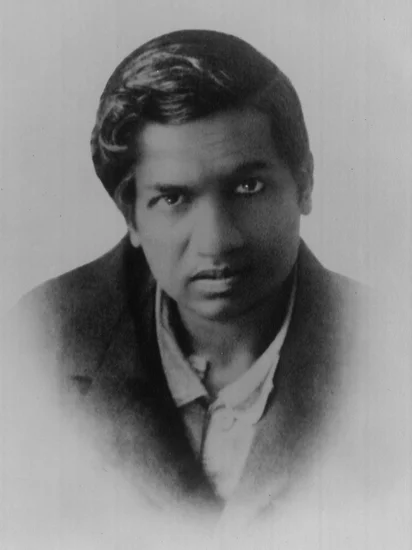
Indian mathematician and theorist Srinivasa Ramanujan died at age 32, leaving behind revolutionary contributions to number theory. His self-taught mathematical insights astounded academic mathematicians worldwide.
Ramanujan’s notebooks contained thousands of theorems and formulas that continue inspiring mathematical research. His brief collaboration with G.H. Hardy at Cambridge produced groundbreaking mathematical discoveries.
1984 – Count Basie, Jazz Legend
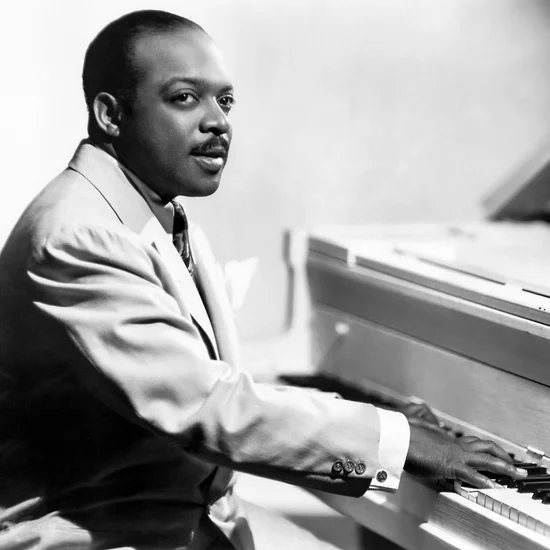
American pianist, composer, and bandleader Count Basie died after leading one of jazz history’s most influential big bands. His Kansas City swing style defined an era of American popular music.
Basie’s orchestra launched numerous jazz careers and popularized swing music nationally. His minimalist piano style and band leadership created the “Basie sound” that influenced generations.
1989 – Lucille Ball, Comedy Queen

American actress, comedian, and producer Lucille Ball died, ending a career that revolutionized television comedy. Her pioneering work in television production broke significant barriers for women.
Ball’s “I Love Lucy” became television’s most enduring sitcom, establishing standards for situation comedy. Her business acumen made her one of Hollywood’s most powerful executives.
1940 – Carl Bosch, Industrial Chemistry Pioneer
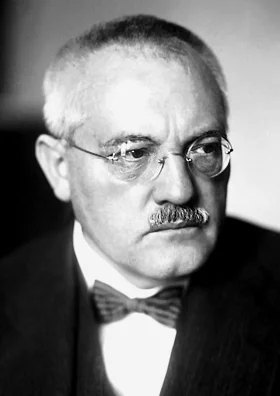
German chemist and engineer Carl Bosch died after developing the Haber-Bosch process for ammonia synthesis. His industrial chemistry innovations revolutionized fertilizer production and chemical manufacturing.
Bosch’s work enabled large-scale agricultural improvements that fed millions of people. His Nobel Prize-winning contributions to chemistry had profound global impact.
1969 – Morihei Ueshiba, Aikido Founder

Japanese martial artist Morihei Ueshiba died after founding aikido, a martial art emphasizing harmony and non-violence. His spiritual approach to combat transformed traditional Japanese martial arts.
Ueshiba’s aikido philosophy influenced martial arts worldwide by emphasizing defense over aggression. His teachings spread internationally, promoting peaceful conflict resolution through physical discipline.
1910 – Bjørnstjerne Bjørnson, Norwegian Literary Giant

Norwegian-French author, poet, and playwright Bjørnstjerne Bjørnson died after winning the Nobel Prize in Literature. His patriotic writings helped establish Norwegian cultural identity.
Bjørnson’s novels and plays celebrated Norwegian history and folklore while promoting national independence. His literary work contributed significantly to Norway’s cultural emergence as an independent nation.
1976 – Sid James, British Comedy Icon
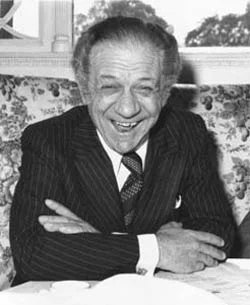
South African-English actor Sid James died after becoming one of Britain’s most beloved comedy performers. His work in the “Carry On” film series made him a household name.
James’s distinctive laugh and comedic timing endeared him to British audiences for decades. His transition from dramatic to comedy roles demonstrated remarkable versatility.
Holidays and Observances on April 26
Chernobyl Remembrance Day

Belarus and Russia observe remembrance days for the Chernobyl nuclear disaster and radiation accidents. These solemn commemorations honor victims of nuclear accidents and raise awareness about nuclear safety.
The observances remind the world of nuclear power’s potential dangers. Educational programs on these days promote nuclear safety and environmental protection.
World Intellectual Property Day
The international community celebrates World Intellectual Property Day to promote awareness of intellectual property rights. This observance encourages innovation and creativity through patent, trademark, and copyright protection.
The day highlights intellectual property’s role in economic development and cultural progress. Educational events demonstrate how IP protection encourages innovation and artistic expression.
Union Day in Tanzania
Tanzania celebrates Union Day, commemorating the 1964 merger of Tanganyika and Zanzibar. This national holiday celebrates the peaceful unification that created modern Tanzania.
The celebration honors the vision of leaders who created African unity. Cultural events showcase the diverse traditions that merged to form Tanzanian national identity.
